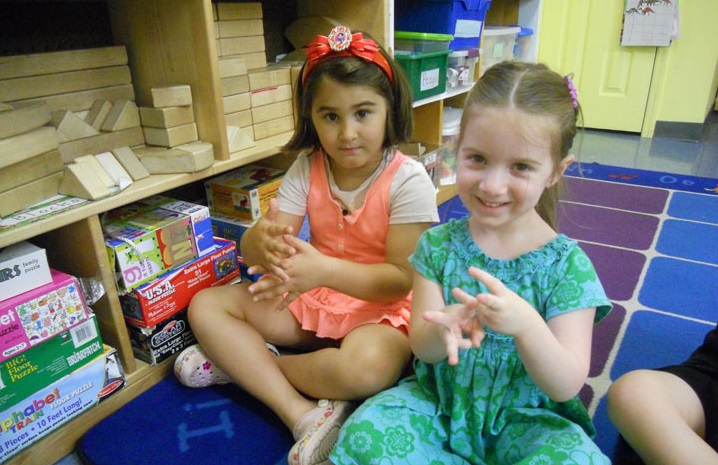Sign Language
Sign Language
Studies have shown that infant signing can reduce frustration, make learning to talk easier, stimulate the child’s intellectual development, and even enhance the child’s self-esteem.
Infants are born with an inborn need to communicate. They instinctively look for eye contact with a parent or caregiver in an effort to communicate. If the caregiver talks with a baby and uses signs at the same time, the infant soon realizes that the sign means what the caregiver is saying.
We know that a newborn infant has neurons and synapses at birth that are basically waiting for stimulation to connect. If a baby does not have a caregiver who is attentive to the child’s needs and who speaks eye-to-eye with the child, those connections will not happen as they should. We know that each month of life in a baby, more and more connections are made based on the child’s responsive or non-responsive environment. Studies have shown that 85% of a child’s brain is complete before the age of three.
Clearly infants do not yet have the ability to speak words, but studies have shown they have to ability to understand and communicate well before they can speak. Watching a caregiver speak and use simple American Sign Language signs, the child will learn those signs and begin to use them to “talk back.”
Research has shown that babies who sign are less frustrated since they have a way of expressing their wants and needs. Simply put, they cry less. But even more amazingly, babies who are taught a few simple signs not only speak earlier than non-signers but have larger vocabularies and become better readers. It has to do with stimulating more synapses of the brain. Signing babies have IQ’s that are 10-12 points higher.
To sum it up, babies who sign…
- Speak earlier than non-signers
- Experience less frustration
- Develop larger vocabularies
- Become better readers
- Have IQ’s that are at least 10-12 points higher
